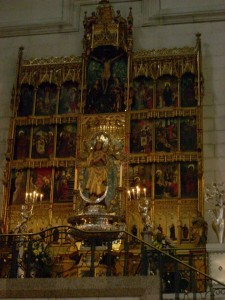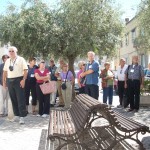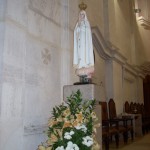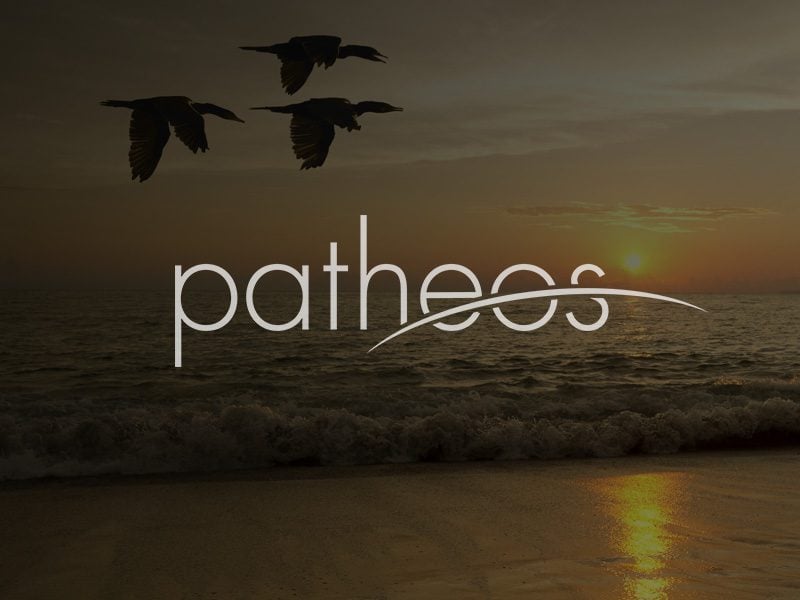On the walls of a museum, we come face-to-face with two views of life. Both have the power to shake us to our roots. Both look like madness. And both are roadmaps of the human journey. But only one is true, and you can tell it by the tears.
Pilgrimage 2012, Day 6: Madrid
[A note to the patient pilgrims: After wrestling with jetlag and some personal baggage—not the kind subject to customs inspections, but carried with me on the pilgrimage no less, and seriously over the weight limit—I’m back on the virtual road. Thank you for not wandering away when we left you by the highway so long ago!]
Our stay in Madrid was meant to be a bit of a break in the pilgrimage routine, with an emphasis more on exploring the culture of Spain than on visiting shrines to cultivate the culture of our souls. It worked that way for many of us, those who took advantage of the rare free time to shop for souvenirs (and, in one case, to replace the blister-y dress shoes—the sandals forgotten at home—with more comfortable walking shoes of Spanish leather), to stroll in the park of El Retiro or sit on a bench in the sun in the botanical gardens, to seek out a tapas bar or attend a flamenco performance. We did run into interference from the real world: some folks riding a city bus to the Plaza Mayor were turned back because of threatened demonstrations against economic cuts. The demonstrations didn’t amount to much until last week, when we were back home, and the Spanish MSM news ignored them completely. (I know, because I watched the news after catching NCIS in Spanish.)

We did encounter Mary under another miraculous title, when we celebrated Mass at the cathedral. Only recently completed, the cathedral is named for an image of Mary that, according to legend, dates back to the 8th century or earlier. When the Moors conquered Madrid in the early 700s, an image of Mary then known as Santa Maria Mayor (St Mary Major) was hidden in the city wall. Three hundred years later, when Madrid was returned to Christian rule, the besieging army dreamed that Mary led them into the city. They awoke to find the city wall had crumbled in one place, revealing the image and allowing the armies a way in. After driving the Moors from the city, the bishop set up the image in what had been the central mosque. When the palace of the Spanish kings was built next door, the shrine of the image became the chapel royal. Today, the cathedral stands here, named Santa Maria la Real de la Almudena—St Mary the Royal of the Almudena (from the Arabic for “the citadel,” because she was pulled from the fortified walls). One more story of the interplay of faith and power on the Iberian peninsula, and the role in it the devout have assigned to Mary.
After Mass, we were guided on the cultural portion of our pilgrimage—visits to El Prado, the enormous and dizzyingly rich art museum of the Spanish kings, and to the royal palace. We had precisely an hour in the Prado, which is stuffed with a lifetime’s worth of religious masterpieces alone, not to mention the other works of the world’s greatest painters. I knew that our local guides, given the brevity of our visit, would focus on the pride of Spain, the museum’s vast collections of Velasquez, El Greco, Murillo, and Goya. And I love these. But I also knew that the Prado holds my favorite painting in the world—and it’s not Spanish. The thought of being in the same house as Rogier van der Weyden’s Deposition of Christ altarpiece and not seeing it had me in fits. My friend Michael, however, arranged that the group we were in (one of three into which our large pilgrimage was divided) was led first to the Flemish wing, and straight to the Deposition.
I started crying the minute we entered the room. I’ve written and taught about this marvelous painting for decades, and in its presence all I could do was weep silently and allow it to teach me.
I begged off from the group, and kept Mary’s station at the cross with her for another 30 minutes. Then, walking back to where I was to meet the group, I picked up a map of the museum and learned that the Flemish wing contained at least 5 or 6 other favorites. So I literally ran from room to room, genuflecting in front of a Fra Angelico Annunciation (with the Joyful Mysteries picked out in exquisite miniature beneath, and a woeful Adam and Eve leaving Paradise on the left), the Mantegna Dormition of the Virgin (tinier than I had imagined, but perfect), the chaos of Bosch’s Garden of Earthly Delights and his wonderful table depicting the Seven Deadly Sins that Philip II commissioned for his bedchamber and used as a nightstand or a To-Do list, the wonderful sweeping drama of Correggio’s Noli mi tangere, and an entire roomful of nursing Madonnas, each proffering a chaste and egg-white breast from bodices of intricately-woven Flemish tapestry. And I cried the whole time.
 I found out later that my fellow pilgrims had also, many of them, been stricken to the quick by a painting—Goya’s Saturn Devouring His Children. (Several were so disturbed by the subject matter and the treatment that they insisted it was called Satan Devouring Sinners.) This nightmarish vision, one of the so-called Black Paintings that Goya painted directly on the walls of his house in his last years of madness and despair, may not refer to the classical myth at all, as the paintings were all named by art historians after Goya’s death. But I couldn’t help but think what a terrific diptych of contrast the Prado had provided us with.
I found out later that my fellow pilgrims had also, many of them, been stricken to the quick by a painting—Goya’s Saturn Devouring His Children. (Several were so disturbed by the subject matter and the treatment that they insisted it was called Satan Devouring Sinners.) This nightmarish vision, one of the so-called Black Paintings that Goya painted directly on the walls of his house in his last years of madness and despair, may not refer to the classical myth at all, as the paintings were all named by art historians after Goya’s death. But I couldn’t help but think what a terrific diptych of contrast the Prado had provided us with.
Both the Deposition and Saturn present us with the notion of a divine Father sacrificing his child. In the myth of Saturn (also known as Cronus, or Time) the father of the gods is told that he will be supplanted by one of his children. In a jealous rage, he devours each child as it is born; only Jupiter (Zeus) escapes, and does in the end destroy his father and seize power. That is the picture of life the world gives us: that Time devours all things, that true power can only be achieved by killing and supplanting those who hold it. I can feel pity for Goya in his darkness, but the painting—and the worldview it enshrines—engenders only terror and disgust.

The Deposition shows us another way. This Father has sacrificed his Son not out of selfishness but out of bountiful generosity. For us, for us! Time only appears to devour our lives—the curve of Mary’s swooning body, echoing that of her lifeless Son, the tears on the faces of Mary’s sisters and of the weeping Magdalene, John’s red eyes and the wince of pain on Nicodemus’s brow all testify to the pain that illusion brings, even to those of deepest faith—but we know the story ends with Eternity victorious. And true power lies—like the graceful body of the Crucified One—in the arc of surrender to God’s will. This one is the true picture of our lives. You can tell, because of the tears it depicts and the tears it engenders.
I didn’t visit the royal palace of the kings of Spain. After my hour in the museum, all I could was sit on the darkened bus and pray. My fellow pilgrims were impressed, then overwhelmed, by the luxury—the countless state dining rooms, the velvet bed hangings, the gilded ceilings, the crystal and china and jewels beyond price. It was a good contrast, they said over dinner, to our own lives, and a good reminder of what really counts. Me, I am profoundly grateful in one sense for the wealth of the Spanish crown, which enabled the placement of the Deposition and Saturn Devouring His Children under one roof, for our contemplation.
It just goes to show that even when you’re on a break from pilgrimage, your soul can turn a corner and come upon a shrine you will never forget. Eyes open, pilgrims!
_____
NEXT: Zaragoza, and the Oldest Pilgrim Shrine Outside the Holy Land













